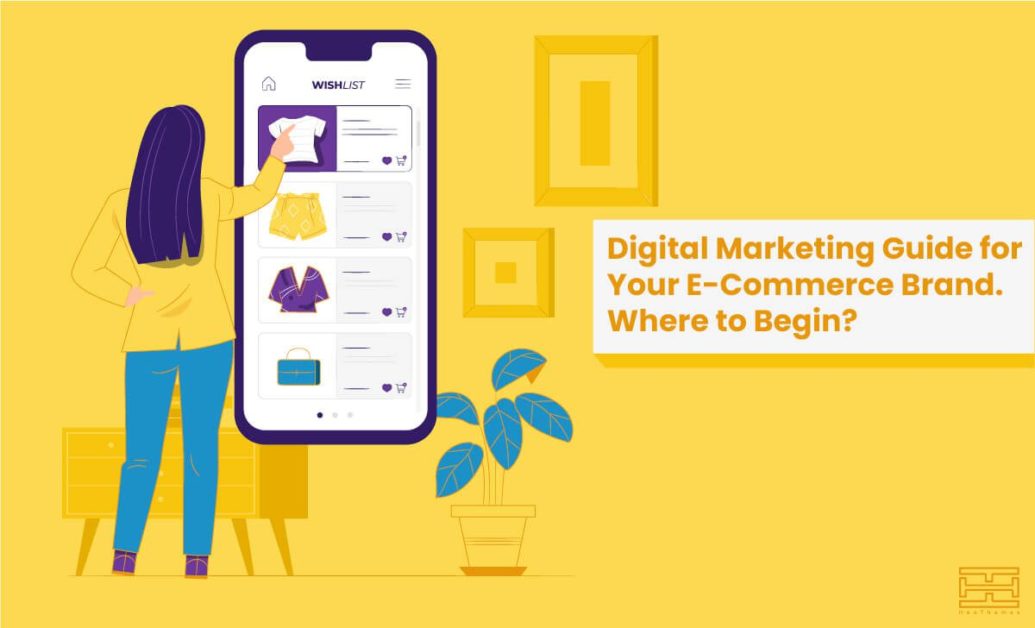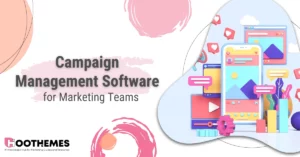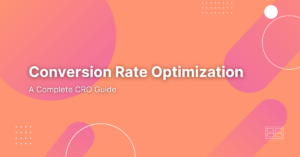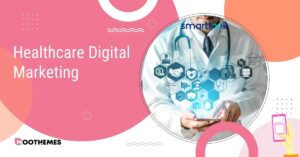Online competition has grown exponentially over the past two years, driven by the coronavirus pandemic. Lockdowns and stay-at-home policies increased online shopping, and email campaigns changed consumer behavior for good, paving the way for numerous new eCommerce business owners.
If you’re thinking about setting up your own eCommerce business or have already done so, that’s an excellent start. The following questions would be how to perfect your digital marketing strategy for eCommerce, how to set up the perfect eCommerce customer service system, and how to promote your online store.
Firstly, let’s look at how innovation thrives in crisis and how the Covid-19 pandemic has created an opportunity for new eCommerce business opportunities.
Ecommerce Innovation Driven by the Covid-19 Pandemic
What previous crises have taught us, innovation and entrepreneurship thrive during hardships. 71% of retail executives have said they believe a crisis can create significant momentum for new business opportunities, according to McKinsey’s research into Innovation in Crisis.
The financial crisis in 2008 was a catalyst for people out of jobs to create their opportunities. Companies like WhatsApp, Venmo, Instagram, Uber, and Groupon were founded between 2008 – 2010, driven by heightened consumer distrust.
During the Covid-19 pandemic, new shopping patterns have been at the forefront of changed consumer behavior. The new entrepreneurial wave seems to be driven by the shift to online, an opportunity for several new eCommerce businesses.
This guide will go through the leading digital marketing channels to leverage a cohesive eCommerce marketing strategy.
Read more: Google Analytics Heat Mapping: A Few Quick Tips to Get the Best Results.
What is Ecommerce Marketing?
E-commerce marketing relies on using common tools for marketing an eCommerce business, along with adopting effective strategies and tactics to promote your online store. Leveraging digital marketing channels like social media, content marketing, email, mobile, and SMS marketing can help you grow your existing customer base and win over new customers, to increase traffic and conversions.
But which ones to focus on?
Suppose you are thinking about starting your eCommerce business or have already begun. In that case, this eCommerce marketing guide will help you define each channel and choose the best fit with your overarching business strategy.
If you are using hosted eCommerce platforms like Shopify or BigCommerce, chances are you have already familiarized yourself with how these platforms work. For example, several free and paid Shopify apps can help you connect your store to social media platforms or help with email marketing.
Let’s define each digital marketing channel and its benefits to help you decide.
Read more: Flip the Script: An Intriguing New Approach to the Same Old Behavioral Targeting.
Digital Marketing Channels to Promote your Ecommerce Business
- Social media marketing
Social media marketing uses social media platforms to create exciting content and reflect the brand image by sharing imagery on your Instagram page, tweeting a contest via Twitter, or sharing video content on TikTok to engage consumers.
Influencer marketing is quickly becoming one of the most popular digital marketing strategies for eCommerce brands. Extreme growth from $1.7 billion in 2016 to $9.7 in 2020 is estimated to reach $13.8 billion by the end of 2021, found the Influencer Marketing Hub survey.
It is a strategy you don’t want to miss and should consider.
Thanks to their social media marketing strategy, direct-to-consumer brands like GymShark, Glossier, and BarkBox have achieved substantial success. Well-known brands like Nike and Adidas or online retailers Wayfair or Asos also excel in using social media marketing to their advantage and are an excellent example.
Read more: Hottest Microsite Trends
What is Social Media Marketing Best for?
Show brand image and values, brand storytelling, customer engagement, inform your customers, social listening, promotions, and offers, and increase sales and customer base.
- SMS marketing
SMS marketing is when you communicate with your customers, both new and existing ones, through text messages. Marketing usually means distributing a product or delivery updates, promotions, or discount offers. Two-way SMS communication can even be used for customer service.
Even though not a fully digital channel, SMS marketing can be an excellent addition to a cohesive eCommerce marketing strategy. Text messages are a great way to reach a broad audience across different demographics.
For example, the direct-to-consumer (D2C) brand Dirty Lemon combines its social media marketing strategy directly with SMS marketing. Dirty Lemon sells flavored water to a particular target audience. They promote products through Instagram stories; however, they sell exclusively through SMS messages. There is no wonder why so many businesses consider reaching out to reliable social media marketing companies in order to make sure their social marketing efforts yield the best results.
Read more: Customer Journey Map: Best Practices + Ready Templates.
What is SMS Marketing Best for?
SMM is best for distributing promotions, offers, discounts, short-term sales boosts, product updates, new releases, customer retention, delivery updates, and customer service.
- Pay-per-click (PPC) advertising
As the name suggests, the pay-per-click advertising model is where marketers only pay each time their ad is clicked. Search engine marketing (SEM) is one of the most popular ways for PPC. It means bidding on a top keyword instead of optimizing the keywords organically.
For example, if someone searches for a popular keyword like “t-shirts,” they will see a sponsored ad by a marketer who bids on this keyword to show up first on the search engine results page (SERPs). In recent years, the increased competition online has driven up the cost of PPC advertising.
Therefore, it is essential to know whether the ROI is high enough to balance the money spent. If the click results in zero sales, you still have to pay the ad fee. Your customer lands on your page don’t automatically mean sales.
Even though PPC is still one of the best ways to market your eCommerce business:
- Create campaigns now and see results faster compared to organic marketing.
- Track your results and adjust accordingly if the campaigns aren’t profitable.
- Target your customers based on their interests and run retargeting campaigns.
Taking Dirty Lemon as an example again, they poured most of their marketing budget, at times up to $30k a day, into paid Instagram ads and soon achieved wide recognition in the market. PPC isn’t just for large businesses and can be utilized by start-ups, but you do need a high budget for it!
What is PPC Advertising Best for?
Quick entry and quick, short-term results, audience targeting, retargeting, clear performance tracking metrics, easy to see if successful or not and adjust accordingly.
- Search Engine Optimization (SEO)
Once you set up your webshop, you will also want it to appear high in the search results.
SEO marketing is when keywords related to your business are optimized organically for your website to rank high in the SERPs to increase traffic. SEO differs from PPC as they can’t be paid for and always show up before organic results. Organic results use Google algorithms to rank the most relevant pages.
Search engine optimization and white-hat SEO tactics are more sustainable and long-term results-focused strategies. It isn’t perfect for seeing instant results and could take up to a year to start to take effect.
But, it is a more sustainable way. At the same time, PPC is only short-term, as your keywords are optimized as long as the ad is running. Once you have organically optimized your keywords, they will remain this way.
What is SEO Best for?
Increasing traffic to your store and increasing conversion rates improve customer experience, increase authority (organic search results have higher click rates), and achieve higher sales.
- Email marketing
For eCommerce promotions and offers, email marketing can be a great help. An email drip campaign is a series of emails that retailers use to reach out to potential new and existing customers using email marketing software. Content can be distributed in a newsletter or promotional emails, e.g., offering a discount code or limited-time deals.
Email marketing is still one of the most popular ways to update customers about new products, offers, and promotions. The aim is to spread the word, encourage traffic, and optimize your conversion marketing efforts.
By sending your customers a link to your shop and combining this with a discount offer, you can increase store traffic and conversions. For example, Uniqlo regularly uses email marketing via newsletters to let their customers know about new products or offer exclusive deals and discounts.
What is Email Marketing Best for?
Distribute offers, promotions, and deals, encourage sales, more traffic, higher conversion rates, sell more, nurture customer relationships, and increase customer engagement and loyalty.
- Content marketing
Content marketing creates and distributes online material like video content, banners, social media content, or blog posts. This type of digital marketing isn’t intended for direct sales but to attract people to buy your products or services.
This type of marketing is essential in eCommerce, as you can show what your brand strategy and product are about. Brand image is so important nowadays to stand out from the competition. This can come across through creative and engaging content that reflects your company values.
White Claw, an alcoholic beverages brand, has positioned its brand through engaging video content posted on its social media pages, aimed at Millennials with high disposable income. Their social media content strategy paved the way for a so-called “White Claw Lifestyle” movement that helped their label reach the top and take a large chunk of the market share.
Read more: Website Visitor Tracking: Things You Should Know.
What is Content Marketing Best for?
Brand storytelling, brand image, connection building with customers, customer loyalty and retention, customer engagement, sharing brand values, and gaining trust.
- Analytics and social listening
Social listening happens when a brand monitors its customers’ behavior across social media channels. It means tracking their comments, responses, clicks, tags, likes, or reactions to get a feeling and a better understanding of which posts and content they engage most with. Tools used are Brandwatch, Awario, or Mention, which track all your keywords’ mentions.
This will enable marketers to make conclusions about improving their future content to increase conversion marketing efforts and engagement even more. For example, brands can use this information to discover their audience and engage in conversation.
Social listening allows brands to create campaigns that are explicitly designed to fit the thoughts and requests of their customers. For example, if customers of a denim brand are talking about a precise fit or wash jeans, they can add that new style to the range. They are specifically designed to meet the requirements of their audience.
Fitness watch brand Fitbit uses social listening to monitor any escalating issues with the products or customer service. By tracking customer comments via social media discussion, they can collect authentic feedback to make improvements.
What is Social Listening Best for?
Customer insights, product improvements, process improvements, customer engagement, customer feedback, and product innovation.
Read more: Heat Map Explained + How You Can Make a Website Heatmap.
Final Step: Create a Cohesive Marketing Strategy for Your eCommerce Business
With the rising online competition, it is getting harder and harder to stand out from the crowd. There are several ways to combine different digital marketing channels and also connect them with offline marketing channels.
Deciding the proper channels for your business is critical. The one that resonates most with your audience engages them and keeps them returning to your store.
One of the most crucial aspects nowadays is brand image and storytelling. Combine your values and reflect these in your marketing campaigns. Brand storytelling remains at the forefront of a successful eCommerce brand.
You can run ongoing PPC campaigns and optimize your page, but conversion rates are likely to remain low without a compelling brand story and quality product. Leverage customer insights, know your audience, and show what your brand is about.


![Read more about the article 50 Best Behavioral Analytics Tools in 2023 [Definitive List]](https://www.hoothemes.com/wp-content/uploads/2022/10/50-Best-Behavioral-Analytics-Tools-in-2022-Definitive-List-300x157.png)






![Read more about the article Domain Vs. Website: What is the Difference? [+Practical Examples]](https://www.hoothemes.com/wp-content/uploads/2022/07/Domain-Vs.-Website-What-is-the-Difference-Practical-Examples-300x157.png)